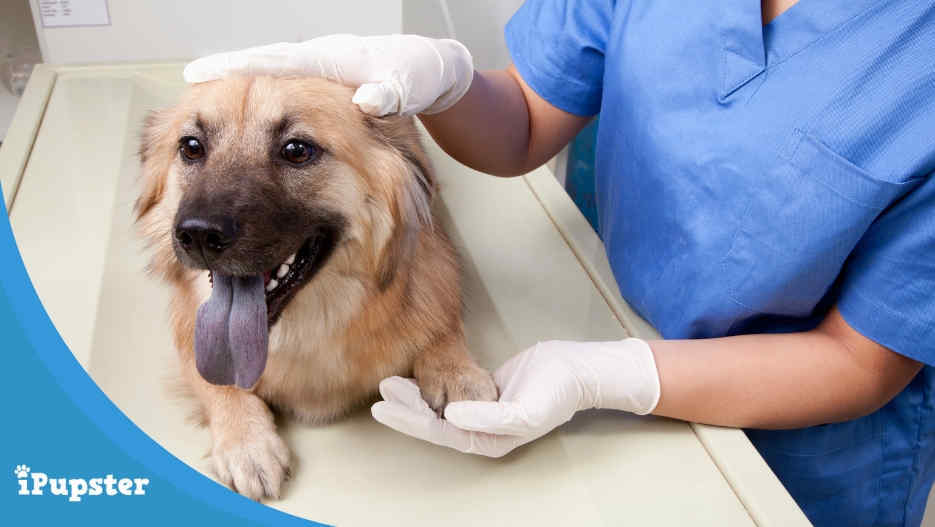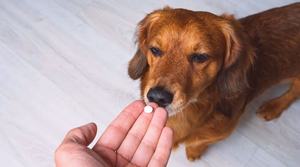
Reviewed & Fact-Checked by
Dr. Chyrle Bonk
Veterinarian (DVM)
Learn more about our Veterinary Review Board »
Hip dysplasia is a serious and potentially debilitating disease. The good news is as the understanding of, and treatments for, this primarily gene based condition improve, so do a dog's chances of leading a happy, active life following a diagnosis of hip dysplasia.
As dogs depend very much upon the humans who take care of them, it really is up to the pet parents of susceptible dogs to take the time to educate themselves about the condition and what can be done to prevent, and, treat it. And that is what we hope to help with here.
What is Dog Hip Dysplasia?
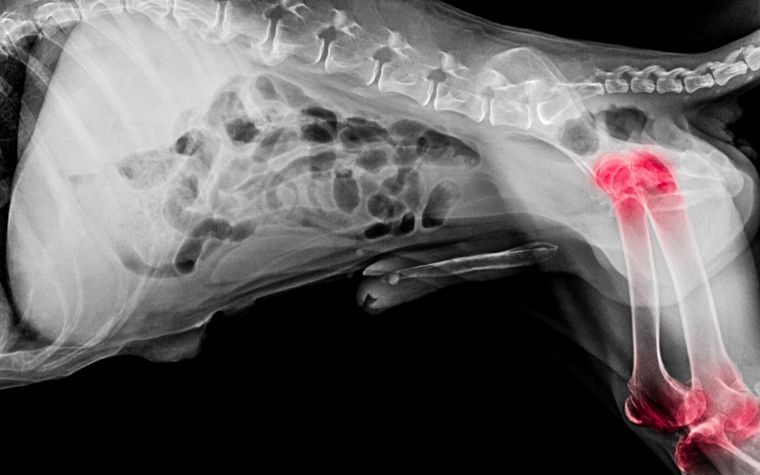
Hip dysplasia is a relatively common skeletal condition. It does not just occur in dogs, it can be found in human adults and children, cats and other animals.
Canine hip dysplasia, occurs when the hip socket is not properly formed.
As most people know the hip joint is a ball and socket mechanism, In dogs who develop hip dysplasia, the joint does not develop as it should and instead fitting together tightly, there is laxity that allows for excessive movement within the joint.
Over time, this excessive movement creates inflammation which can lead to a deterioration of the joint. This can then lead to the eventual failure of the joint itself and a loss of movement for the dog.
When Do Dogs Develop Hip Dysplasia?
There is no set timeline for the development of canine hip dysplasia.
Puppies as young as four months old may begin to display symptoms in severe cases.
Or older dogs, who have been active and healthy their whole lives, may display symptoms that have been triggered - and/or worsened - by the onset of age related osteoarthritis.
Because there is no way to predict when vulnerable dogs may develop the condition the best course of action for any pet parent is to be aware of the possibility and be prepared to act as soon as they observe symptoms and behaviors that may indicate there is a problem with the hip.
What Causes Hip Problems in Dogs?
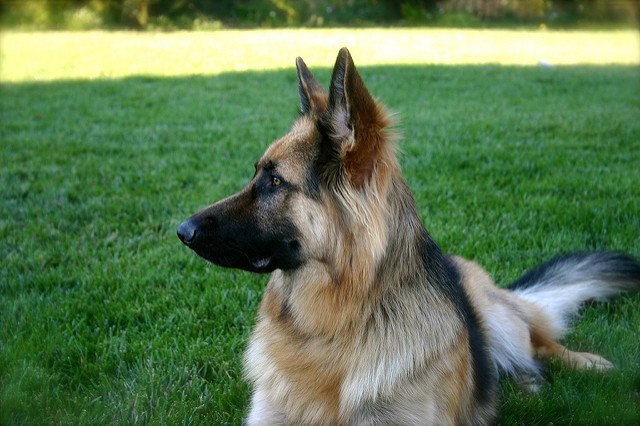
There are several known causes of hip dysplasia in dogs.
Most of them begin with genetics, as it is primarily a hereditary disease. This means that the pet parents of at-risk breeds should take the time to do some research and be, aware that it is a possibility.
Genes alone are not solely responsible for whether a dog with the genetic predisposition for hip dysplasia develops the condition. There are other factors at play.
Those include:
- Being overweight
- Rapid growth rate
- High-impact exercise
- Injury
What Dog Breeds Get Hip Dysplasia?
In reality any dog could develop hip dysplasia. But there are certain breeds that are far more likely to than others. Many people do assume, as we previously mentioned, that the condition only affects large and giant breed dogs, but that is not the case.
Commonly affected dog breeds include: German Shepherds, Labradors, Golden Retrievers, Rottweilers, Saint Bernards, Newfoundlands, French Bulldogs, Chesapeake Bay Retrievers, Pugs, and Boxers.
As you can see, there are a number of small breed dogs on this list.
How To Tell If Your Dog Has Hip Dysplasia?

As we have mentioned several times now that pet parents should be 'on the lookout' for symptoms of hip dysplasia the obvious question for someone just beginning to learn about this condition is exactly what is it that they should be looking for?
All of the following are common 'warning signs' that something may be wrong and that a dog should be taken to their vet for further assessment:
- A decrease - sometimes sudden - in activity
- A new reluctance to climb stairs, or to run or jump as the dog used to.
- A noticeable decrease in a dog's range of motion
- An apparent 'looseness' in hip joint
- Apparent hind end lameness
- The development of a 'bunny hop' gait when walking or running
- A loss of thigh muscle mass
- Enlarged shoulder muscles, an indication that the dog is compensating for their hind end's new failure.
- Apparent pain or stiffness - how can you tell if your dog is in pain? They may stop eating, whine or whimper, become more aggressive than usual and/or display rapid breathing and an increased heart rate.
The pain, which can be quite acute and suddenly be provoked after strenuous activity may be worse in cold and wet conditions. (Brass 1989).
Diagnosis
As soon as pet parents begin to notice any of the symptoms noted above they should make an appointment for their dog to visit their vet.
At that appointment a veterinarian will usually begin their assessment by performing a full physical - something that any dog should have at least once every twelve months anyway.
Often hip dysplasia can be tentatively confirmed during this exam alone, but it is then confirmed by x-rays.
These x-rays will not only confirm the presence of the condition but also the severity of the hip dysplasia, something that will then allow your vet to suggest the appropriate course of treatment.
How To Prevent Hip Dysplasia in Dogs
At this point, let’s backtrack a little before we go on to discuss treatments for canine hip dysplasia and talk about how pet parents might be able to help prevent the condition from affecting their dogs.
Just remember that not all cases of the condition can be prevented, however hard a dog’s owner tries and however much they spend.
Some dogs are simply destined to suffer from the condition and treatment will be in their future. However, research and anecdotal evidence suggests that all of the following may indeed help prevent, or at least delay the potentially debilitating disease.
1. Weight Management
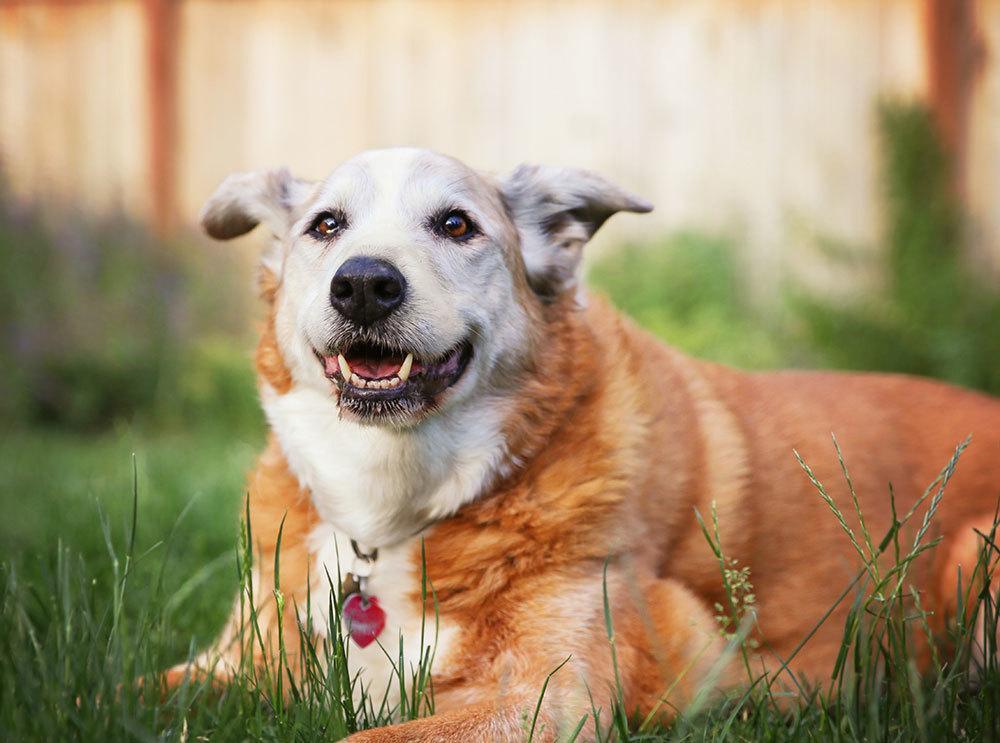
As is the case for humans being overweight can cause all kinds of health problems in dogs. It is well known that it can certainly be a real problem for dogs who are prone to developing hip dysplasia.
The seemingly obvious way to ensure that a dog does not become overweight is to calorie restrict their diet and ensure they get lots of exercise. However, it is not quite as simple as that.
If you think back to the list of dog breeds that are most susceptible to hip dysplasia, you'll notice bulldogs and pugs.
Neither of these breeds can tolerate an excessive amount of exercise well at all. In fact, if a bulldog is pushed too far when it comes to physical exertion it can be dangerous for their health.
In addition, calorie restriction often means pet parents feed their dogs less and that can mean they miss out on important nutrition, including the nutrition that they need to build, and maintain, a strong healthy skeleton and joints that function as well as possible.
So if the standard wisdom of less food and more exercise - that often works well for humans - is not the answer, what is?
2. Nutritious Diet
One of the biggest keys to helping prevent hip dysplasia and a dog from becoming overweight is for pet parents to try to ensure that they offer the right food in the right amounts.
However, the array of dog food choices that a pet parent has can be mind-boggling. Most people feed their dogs a combination of wet food and dry kibble and that is, experts agree, a perfectly sensible approach.
However when faced with several shelves bulging with dog food choices which is the right one to make for a dog who may be at risk for hip dysplasia.
A good dog food for dysplasia, in general, will contain meat, fruits, vegetables and, in some cases grains, including joint supplements for hip dysplasia.
The best food for dogs with hip dysplasia use high quality versions of these ingredients in order to provide dogs with all the nutrition they need.
While we often think of dogs as pure meat eaters the fact is that they are not. Unlike cats, that are obligate carnivores, dogs require a balance of meat, fruits, vegetables and grains.
3. Ingredients for Healthy Bones and Joints
There are certain things that the pet parents of a dog at risk for hip dysplasia should look for when going through the ingredient lists of various food choices.
For example, glucosamine is a naturally occurring compound that has been shown to be very helpful when used in the treatment of arthritis in humans, dogs, horses, and other animals.
In dogs it is also often used to help keep the joints, especially the hip joints, healthy.
It seems to be able to help relieve pain in dogs who do suffer from hip dysplasia. It is often added to higher quality dog foods, especially those for larger breeds, and is certainly an addition worth looking out for.
4. Exercise
An under exercised dog is at greater risk of developing hip dysplasia but caution must also be used to make sure that they are not being over-exercised in the case of smaller breeds.
If a pet parent is unsure about just what their dog's specific exercise needs really are a chat with their veterinarian should help clear things up.
“The main goal of exercise is to strengthen muscles and bones and improve flexibility. This is best done with low-impact exercises, such as walking and swimming. High-impact exercises, like jumping and twisting will also strengthen muscles, but may have a negative impact on the bones. All of that excessive pressure can damage joints, especially developing ones, and lead to worsening hip dysplasia down the road.” ~ Chyrle Bonk, DVM.
How To Treat Hip Dysplasia in Dogs
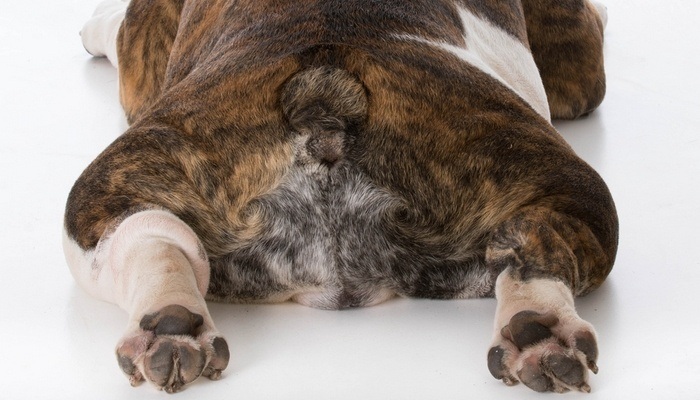
If, despite all their best efforts a pet parent does discover their dog has hip dysplasia the condition is no longer as frightening as it once was. That is because there are some excellent treatments available, both surgical and non surgical.
A diagnosis of hip dysplasia does not always immediately mean that surgery is the best course of action. If the condition has yet to become very severe, many vets prefer to avoid surgery and in some cases it may not even be an option due to other health conditions or even for financial reasons.
Just what treatments any particular dog goes through is a matter for their pet parent and vet to decide. However, here's 10 ways to treat your dog's hip dysplasia at home that don't involve surgery.
1. Improved Nutrition and Weight Control
Aim to give dogs a high quality dog food that not only meets their basic dietary needs but offers them nutritional access to things that may be able to help improve and support their bones and joints.
This includes, omega 3 fatty acids - which is provided in many dog foods from flax seed, salmon and other meaty fish like whitefish.
In younger dogs, additional calcium is also often helpful, but the desirable levels should be discussed with a vet, as too much calcium can lead to a number of dog health problems including kidney disease and urinary stones.
It is also important that a dog's weight is controlled.
To make sure that pet parents are setting the right goals, it is important to discuss ideal weight ranges with a vet.
A specialist weight management food may be very helpful if a dog is overweight, but may not be needed for every dog suffering from hip dysplasia.
2. Therapeutic Bedding
Investing in an orthopedic dog bed ensures your dog sleeps well and that their joints are well supported.
These beds are designed using combinations of supportive foam and cushioning in order to provide better sleeping support and to relieve pressure on the joints when an afflicted dog is lying down.
They are, in fact, very similar in principle and design to orthopedic support mattresses for humans.
3. Slow-Feeding
Some dogs gobble down their food a little too fast. Not only can this lead to them overeating, and thus perhaps gaining too much weight, but also to excess air intake and even bloat.
A slow feeding dog bowl - usually a ‘puzzle bowl’ can help regulate their eating speed and help keep them leaner and healthier.
An adjustable elevated dog feeder improves digestion by making swallowing easier and reduces stress on joints.
4. Ramp Up

Some dogs suffering from hip dysplasia do lose the ability to jump up to cars, beds, sofas or other higher surfaces. But they will often keep trying and may injure themselves in the process.
A dog ramp - which is exactly what it sounds like - can allow them access to all their favorite spots without the need to over exert themselves.
Rear lifting harnesses, slings and doggie strollers are also available, which stabilize the pelvis, give support, improve mobility and greatly enhance the quality of life of our pets.
5. Specialist Hip and Joint Supplements
Hip and joint supplements now commonly recommended for dogs with hip dysplasia. Glucosamine chondroitin and MSM supplements are recommended by many vets as are fish oil supplements (for the omega 3 fatty acids).
6. RX Pain Medications
Pain medications may help ease the discomfort in dysplastic hip joints.
Most of the time these medications are what’s called a non-steroidal anti-inflammatory. These tend to be safer for long term use than steroidal anti-inflammatories, and they can be given every day or as needed.
7. Controlled Exercise
The key to any exercise routine for canine hip dysplasia is make sure that the dog is comfortable and does not seem to be overdoing things.
Simple walks are fine if that seems to be all they can tolerate and they should be monitored for signs of distress or fatigue at all times.
Just avoid high-impact exercises such as lots of jumping.
8. Physical Therapy
Some owners of dogs with hip problems do find that their dogs improve when they are given a physical therapy regime to follow.
In milder cases it is often a vet's recommendation that a course of physical therapy, combined with supplements and mild pain medications is the best treatment over surgery.
These should be combined with monitoring to help ensure that the dog’s condition is improving rather than deteriorating.
9. Hydrotherapy
As the name suggests this therapy is water based and is thought to be very effective for many dogs with hip dysplasia. The dog is usually placed in a large water filled tank that boasts a treadmill at the bottom.
The dog is then encouraged to walk on treadmill but as the water itself is supportive and comforting it allows them to build up weakened hind legs without overexertion or pain.
Sessions cost on average of $50 each.
10. Acupuncture
Acupuncture has been used in Eastern medicine for thousands of years and it may surprise you that some pet parents feel it can be as beneficial for their dogs as it is for humans.
It is important to ensure that the acupuncturist administering the treatment is familiar with dogs of course, and not just humans, but an increasing number of them actually are.
Pet parents who are interested in the idea should ask their vet for a recommendation, although there are some practices that now have a canine acupuncturist on staff.
Hip Dysplasia in Dogs Surgery and Costs

If a veterinarian decides that a dog with hip dysplasia is a good candidate for surgery, there are several different options that can be considered.
Hip dysplasia surgery for dogs costs between $1,700 to $5000+.
If you have pet insurance and hip dysplasia is not a preexisting condition, your treatment costs should be mostly covered.
While new surgeries are always being trialed, the three most commonly used at the moment are:
- Double or triple pelvic osteotomy (DPO/TPO)
- Femoral head ostectomy (FHO)
- Total hip replacement (THR)
DPO/TPO
This is a surgery that is reserved for young dogs who are under the age of ten months or so.
The pelvic bone is carefully and selectivity cut and repositioned so that the hip socket fits more fully and tightly over the ball.
FHO
This surgery can be performed on dogs of all ages, usually those with some degree of arthritis.
This surgery is a little more invasive as it involves cutting of the 'ball' part of the hip socket, properly known as the femoral head.
This decreases the amount of pain and discomfort in the joint by removing one of the bones that is grinding against the other. A false joint is created that has less pain but also slightly less function than the original joint.
It is a strategy that may be considered in the most serious cases.
THR
The single most effective surgical treatment for canine dysplasia is a total hip replacement.
As is the case in humans, the whole original hip joint is removed and replaced with metal and/or plastic implants.
Most of the discomfort and complications caused by hip dysplasia are eliminated and a successful surgery sees many dogs return to a normal range of movement.
The Modern Prognosis for Dogs Living with Hip Dysplasia
Although it was once considered a very serious condition and one that would eventually debilitate, most dogs suffering from hip dysplasia these days can, still live very full, happy and active lives well into old age.
This video highlights how canine physical therapy can benefit dogs with joint issues.
Helping a dog with hip dysplasia does call for a fair amount of work on a pet parent's part but it does not need to take over your life, or that of your fur kid’s.
If you think your dog is at risk for hip dysplasia, is showing signs of developing it or is actively suffering from it, see your veterinarian. They will help you decide which treatment approach to take so that your dog can live an active and healthy life.
References
- Brass W (1989) Hip dysplasia in dogs. Journal of Small Animal Practice 30: 166-170.
- HEDIIAMMAH, A. A., WU, F. M.. KROOK, L., SCHRYVER, H. F., DELAHIJNTA, A., WHALEN, 1. P., KALLFELZ, F. A., NUNEZ, E. A., HINTZ, H. F.. SHEFFEY, B. E. & RYAN, G. D. (1974) Overnutrition and skeletal disease; an experimental study in growing Great Dane dogs. Cornell Veterinarian, Supplement 2, pp 1-159
- Universities Federation for Animal Welfare (2016) Genetic Welfare Problems of Companion Animals, Golden Retriever, Hip Dysplasia (HD) 2016, (On-line). Available at https://www.ufaw.org.uk/dogs/golden-retriever-hip-dysplasia. Accessed 12.19.18.

